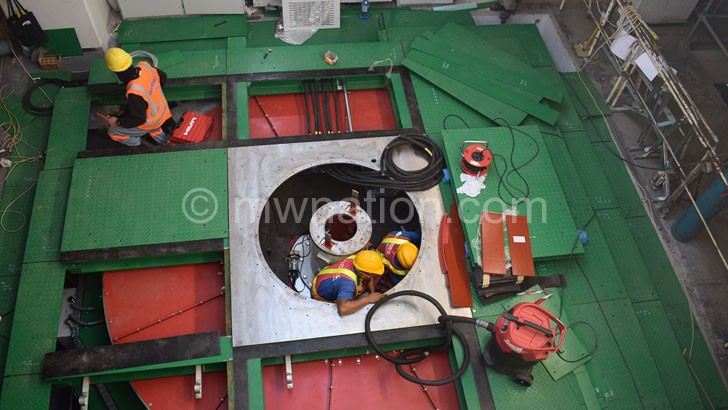
Electricity Generation Company (Malawi) Limited (Egenco) has set ambitious targets in its 15-year strategic plan, which will require $4.3 billion (about K3.2 trillion) to implement outlined projects.
The cost is about 68 percent of the country’s nominal gross domestic product (GDP) at $6.3 billion. (about K4.7 trilion).
In the plan (2018-2033), launched on Wednesday in Blantyre by Chief Secretary to the Government Lloyd Muhara, who is also Egenco board chairperson, the electricity generation firm seeks to leverage its position as government-owned entity to access low-cost finance.

Besides using internally generated money, Egenco says it will target concessionary loans from developmental banks, Public Private Partnerships (PPPs) with equity holders, the financial market and grants.
The investments in the plan mirror government’s drive to boost power generation, which has been insufficient, and also increase access to electricity, now at a paltry 10 percent against a population of 17.5 million.
Speaking during the event, Muhara assured the patrons, who included chief executive officers (CEOs), big and small business owners and consumers, that 12-hour blackouts are now history.
“A strategic plan is just a book. We can have nice literature, but if you don’t do what it says it will remain on the shelf,” he said.
Muhara advised Egenco officials not to sit on their laurels, but be mindful that they have competitors in independent power producers (IPPs).
He said Egenco is moving away from the present situation of relying on running water, instead they want to be building dams to conserve water.
He cited the Mpatamanga Dam along the Shire River, which will be built under the PPP arrangement with International Finance Corporation (IFC), the private sector arm of the World Bank.
Egenco CEO William Liabunya said the plan seeks to bridge the divide between Egenco’s installed capacity of 367.3 megawatts (MW) and the 2018 projection demand of 529MW.
He pleaded for patience, saying investments in the power sector take a long time; hence, this is a rolling plan with reviews every five years.
Some of the strategic objectives in the plan include replacing obsolete equipment and parts and modernising Tedzani I and II, Kapichira I and Nkula B.
Key tasks and activities in the plan include building and increasing installed capacity of Mpatamanga hydropower plant (HPP) of 308MW by 2025, Kholombidzo HPP 219MW by 2027, North Rumphi HPP of five megawatts by 2027, Hamilton HPP 96MW by 2028, Tedzani IV 18MW by 2020, Kapichira 112MW by 2028, Wovwe four megawatts by 2024 and development of mini grids of five megawatts by 2021.
The plan also envisages building coal-powered plant of 300MW by 2031, co-generation of 11MW with Illovo Sugar (Malawi) plc by 2023 and geothermal power plant of 50MW by 2032.
Source: The Nation_Business News-July 5, 2019_by Chikondi Chiyembekeza-Staff Writer
